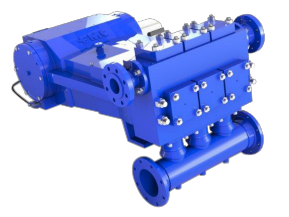How to select piston and plunger pumps
AVAILABLE POWER: The first factor to consider is the available power. Piston pumps are characterized by high efficiency and within the range offered you can find pumps that can be operated by small single-phase electric motors, up to pumps that offer very high performance in terms of flow rate and pressure. Beyond power it is also important to evaluate the type of engine available and its rotation speed in order to allow the pump to work at a speed between 60% and 100%.
PRESSURE AND FLOW RATE: Once the available power has been established, it is key to highlight the use you want to make of the material supplied by the piston pump. There are systems mainly designed to supply large quantities of material at relatively low pressures.
WORKING TEMPERATURE: In some instances, to increase the effectiveness of pressurized water considerably, in terms of cleaning power, it is necessary to supply hot water. In many plants the boiler is mounted downstream of the pump, but this is not always possible. When the heating unit is installed upstream of the pump, it is clear that the latter must be designed to withstand certain temperatures.
FREQUENCY OF USE: There are systems designed to work continuously and others that require an sporadic use of the pump. In this instance it is key to consider the speed of rotation. It is evident that a pump that at the same performance works at a lower rpm than another can be the right choice if intensive use is envisaged.

